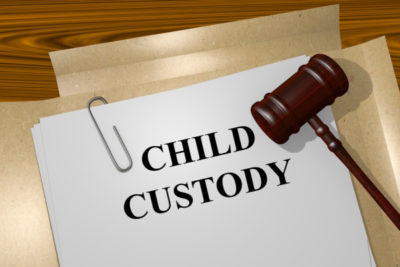The Benefits Of Sole Custody in Your California Divorce
 Previously, we’ve discussed how joint custody is the preferred route for the California family laws. The reason for this is that, when the circumstances line up, joint custody carries numerous benefits for the children and parents alike. Thus, the courts are unlikely to default to awarding one parent sole custody unless there is a strong, compelling reason to do so.
Previously, we’ve discussed how joint custody is the preferred route for the California family laws. The reason for this is that, when the circumstances line up, joint custody carries numerous benefits for the children and parents alike. Thus, the courts are unlikely to default to awarding one parent sole custody unless there is a strong, compelling reason to do so.
That said, these cases where sole custody makes sense do happen. Today, we’re switching things up a bit to discuss the benefits that sole custody can bestow. But first, let’s define the differences between sole custody and joint custody.
Defining Sole and Joint Custody
Joint custody is the most common arrangement that is seen in family law matters in CA. Joint custody falls into two buckets: joint physical custody and joint legal custody.
- Joint physical custody describes an arrangement where the child lives under both parents’ household. This is generally split 50/50, but the actual custody division varies case by case.
- Joint legal custody means that both parents have legal authority to make decisions regarding important aspects of the child’s life. This includes things such as educational opportunities, medical decisions, religious upbringing, and more. When legal custody is joint, both parents usually work together to agree on these key issues.
Under joint custody arrangements, both parents still have to adhere to a defined parenting and custody plan as approved by the family law courts. The benefits of having both parents involved are clear, but for some families this type of arrangement could be less than ideal.
Potential Benefits of Having Sole Custody Over a Child
Many times, it makes more sense for a parent to have sole legal or physical custody, which cuts out the other parents’ rights over the child. Here’s a few reasons as to why family law courts in CA might favor or agree to proceed with a sole custody arrangement:
Joint custody jeopardizes a child’s well-being: If being under the care of either parent places the child’s well-being or health at risk, this is a compelling reason for the family law courts to consider limiting or eliminating their expose to the other parent.
Logistical challenges: If a joint custody arrangement causes too many logistical problems, the courts might give more weight to a sole custody arrangement. For example, parents might have conflicting work schedules or live far away enough where making arrangements interferes with the child’s life significantly.
Financial challenges: If there are any financial difficulties that could prevent either or both parents from providing for the needs of the child, it might make more sense of the courts to consider a sole custody arrangement.
Inconsistent parenting and high potential for conflict: Sometimes, living at both homes might seem feasible until parenting styles or other conflicts begin to emerge. If parents struggle to share their responsibilities and add to the turmoil of a child’s life, this can make a strong argument against keeping joint custody arrangements.
Learn More By Connecting with an Experienced Divorce Attorney
We hope this post provided you with useful facts regarding joint and physical custody arrangements in California. For further information, and if you’d like to consult with one of our legal professionals directly, we at the White Oak Law Firm are a quick phone call away!
Reach our offices by calling us at 925-271-0999 and book your appointment today.
